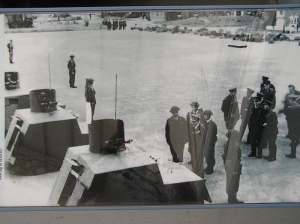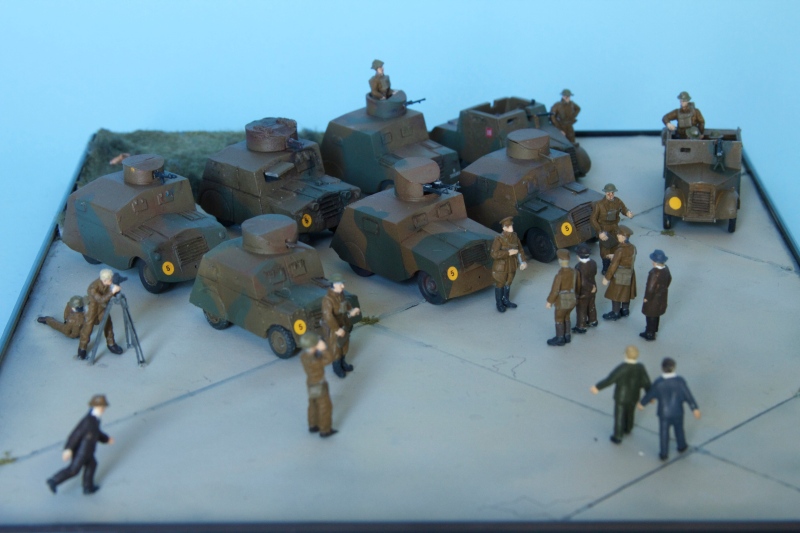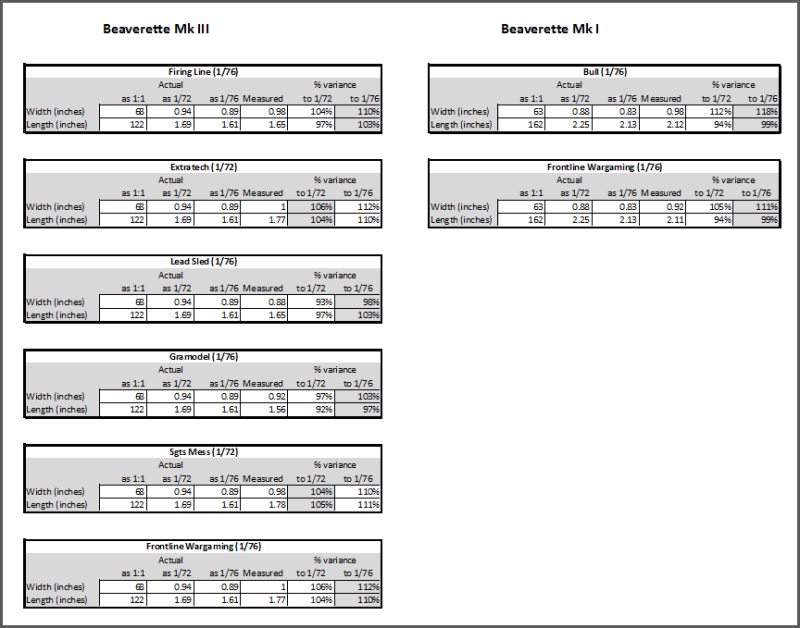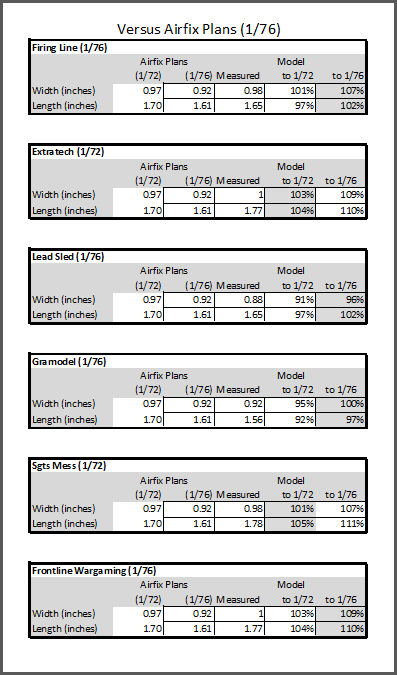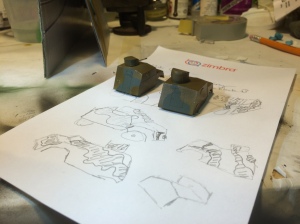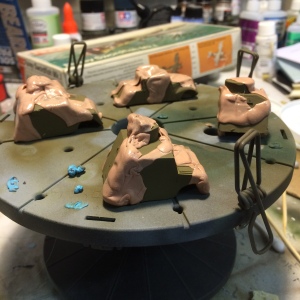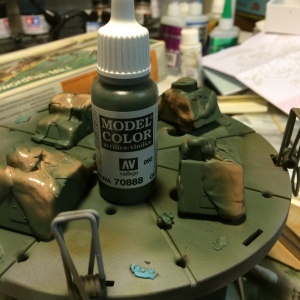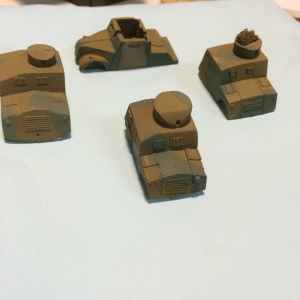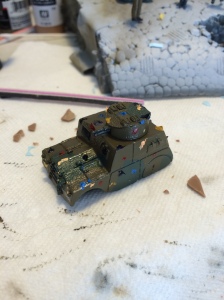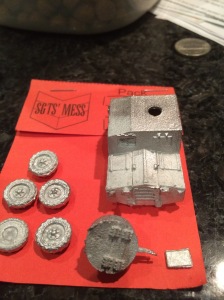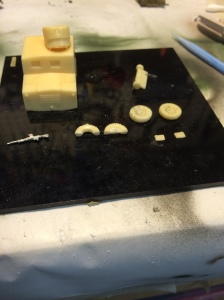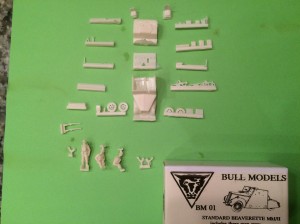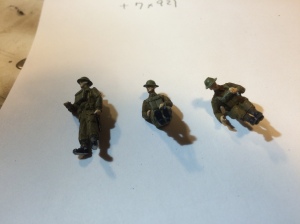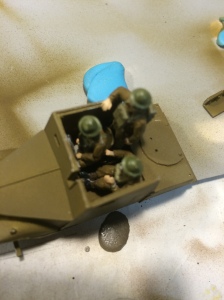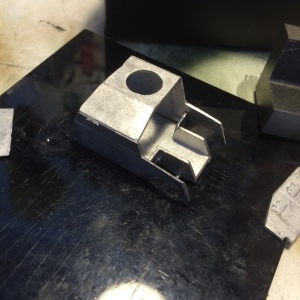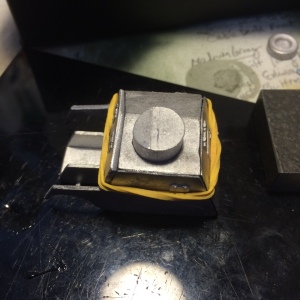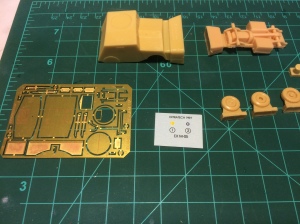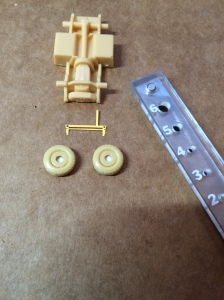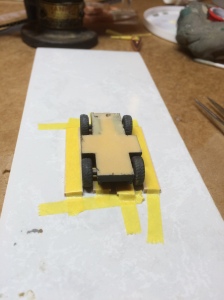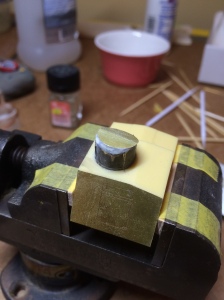You’ll recall that the inspiration for the diorama was the photo below.
So, I set about gathering figures to represent the inspection team as well as the soldiers under inspection. In a meta move, since the photo was the inspiration, I thought I should have a camera crew as well. So, for figures I used:
- Airfix Civilians (vinylish plastic; this is an ancient, out-of-production set of figures designed for model railroads – but it had some businessmen that could stand in for Lord Beaverbrook and aides)
- Airfix British Infantry (the dreaded vinyl-plastic; I used one figure to man a Beaverette Mk III turret after suitable surgery)
- Bull Models BMF 12 UK Officers (resin)
- Bull Models BMF 01 1939/41 BEF/UK Soldiers (resin)
- Bull Models BMF 10 1939/41 BEF/UK Personalities Gort, Montgomery & another officer (resin, at this scale, they could be any officer)
- Bull Models Beaverette Mk I/II – comes with three figures (resin)
- Dan Taylor Modelworks AFPU (Army Film Photographic Unit)
All the figures were brush-painted with a variety of Vallejo Model Air acrylic paints. The resin flesh was painted with blended Model Master enamels but I stuck to simple Vallejo flesh color for the Airfix figures. It was sort of fun painting suits and overcoats for the civilians, not to mention the neckties as I didn’t really have to resort to references here. And, I gave all the civilians different colored suits in a protest move over soldier uniforms. Needless to say, the resin figures are much more detailed in their casting than the Airfix civilians.
The diorama base was an inexpensive picture frame with mattboard for the concrete. I scribed expansion joints and filled with thick black acrylic. The surface color was a mix of Floquil acrylics that were intended to look like weathered concrete. A few cracks were scribed out.
I added some green verge using Plaster of Paris, some tiny gravel from our garden, foam for shrubs, and a two color mix of static grass. For grins, I added two Dart Castings rabbits munching on vegetation (these aren’t the greatest castings as it is hard to tell they are rabbits. Dart does do a great set of cows though for some future project).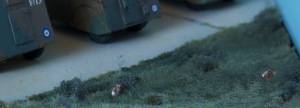
And here we go (click on image to see in more detail):
Back row, left-to-right: FrontLine Wargaming, Sgt’s Mess, Gramodel (all Mk IIIs), Frontline Wargaming (Mk I)
Front row, left-to-right: Lead Sled, Extratech, Firing Line (all Mk IIIs), Bull (Mk I)
Now, there you have it. Here’s the scene as Lord Beaverbrook comes to inspect his not-identical namesakes.
[Beaverbrook] “Which manufacturer got the contract for these vehicles?”
[Officer] ” Standard Motor Company, sir.”
[Beaverbrook] “Funny name for a company that can’t seem to produce identical copies of the same armoured car, I dare say.”
[Officer] ” Standard didn’t have the capacity for the initial production run so they sub-contracted it out to others, sir.”
[Beaverbrook] “Didn’t they send copies of the plans to the subcontractors?”
[Officer] As I understand it, some over-zealous chaps at Standard had responded to a call for scrap metal and collected up all the rulers, compasses, and drafting tools and sent them off to be melted down into munitions. So, when it came time to send copies of the plans to the subcontractors, they sort of ‘free-handed’ the drawings. Sir.”
[Beaverbrook] “Bloody hell.”

